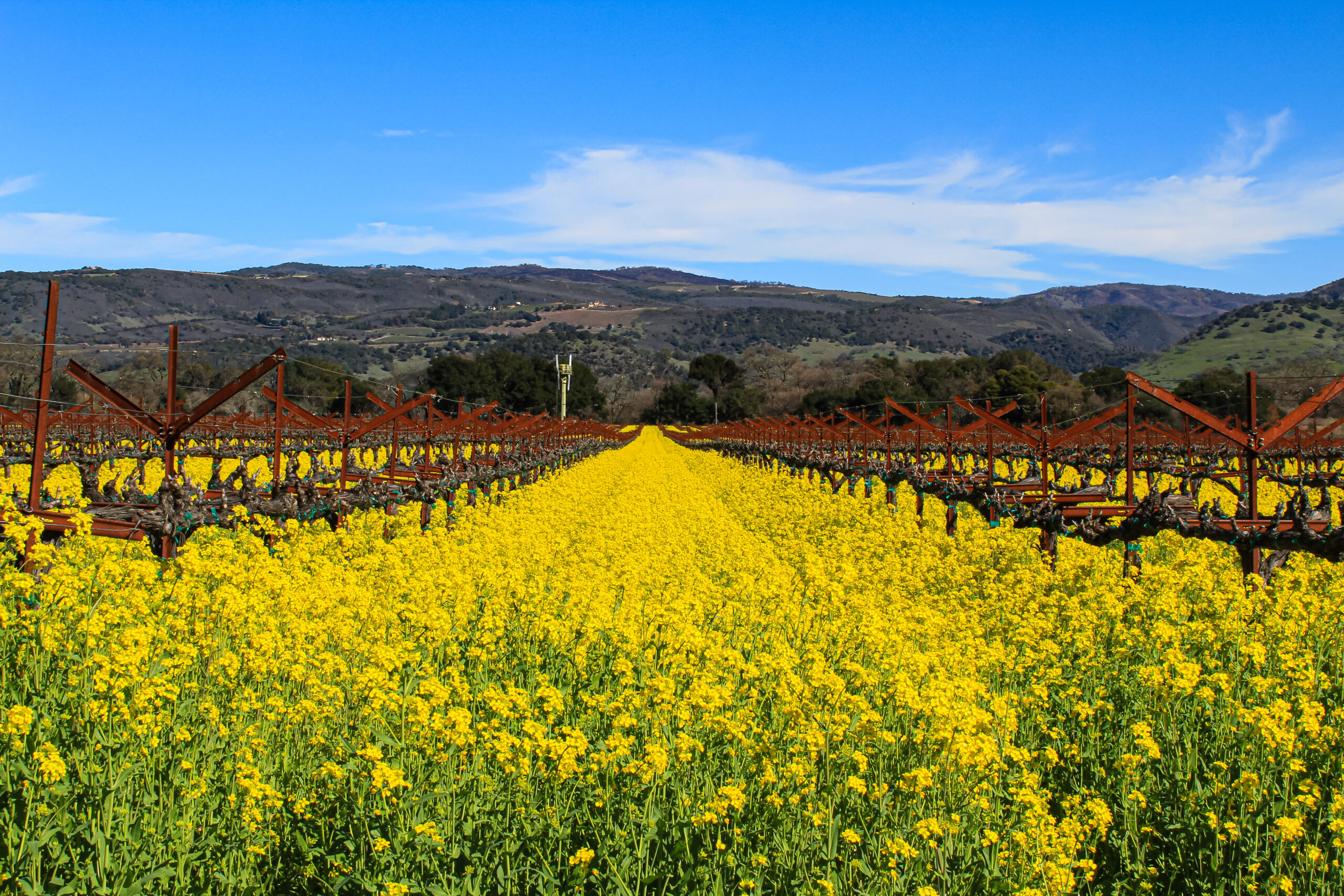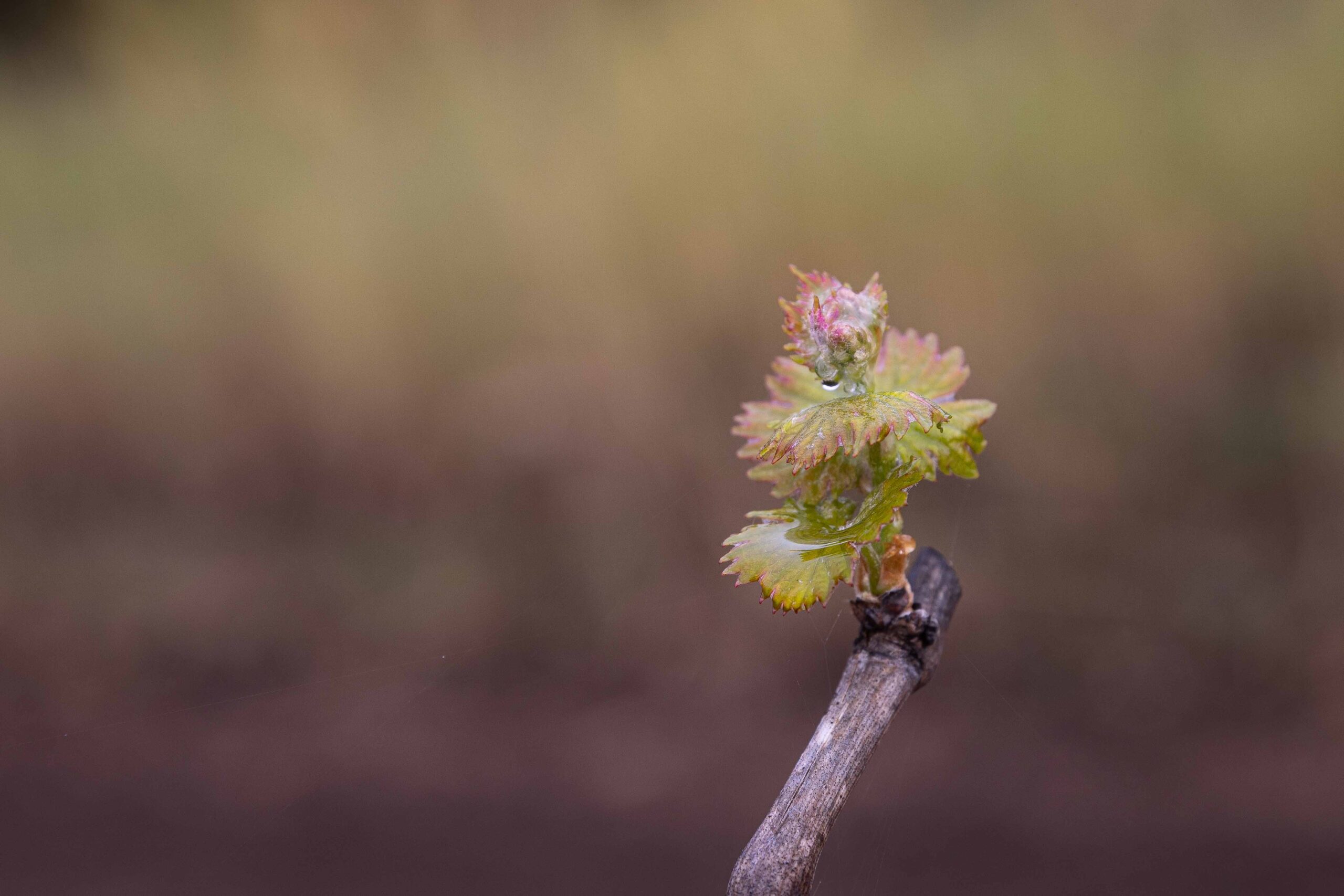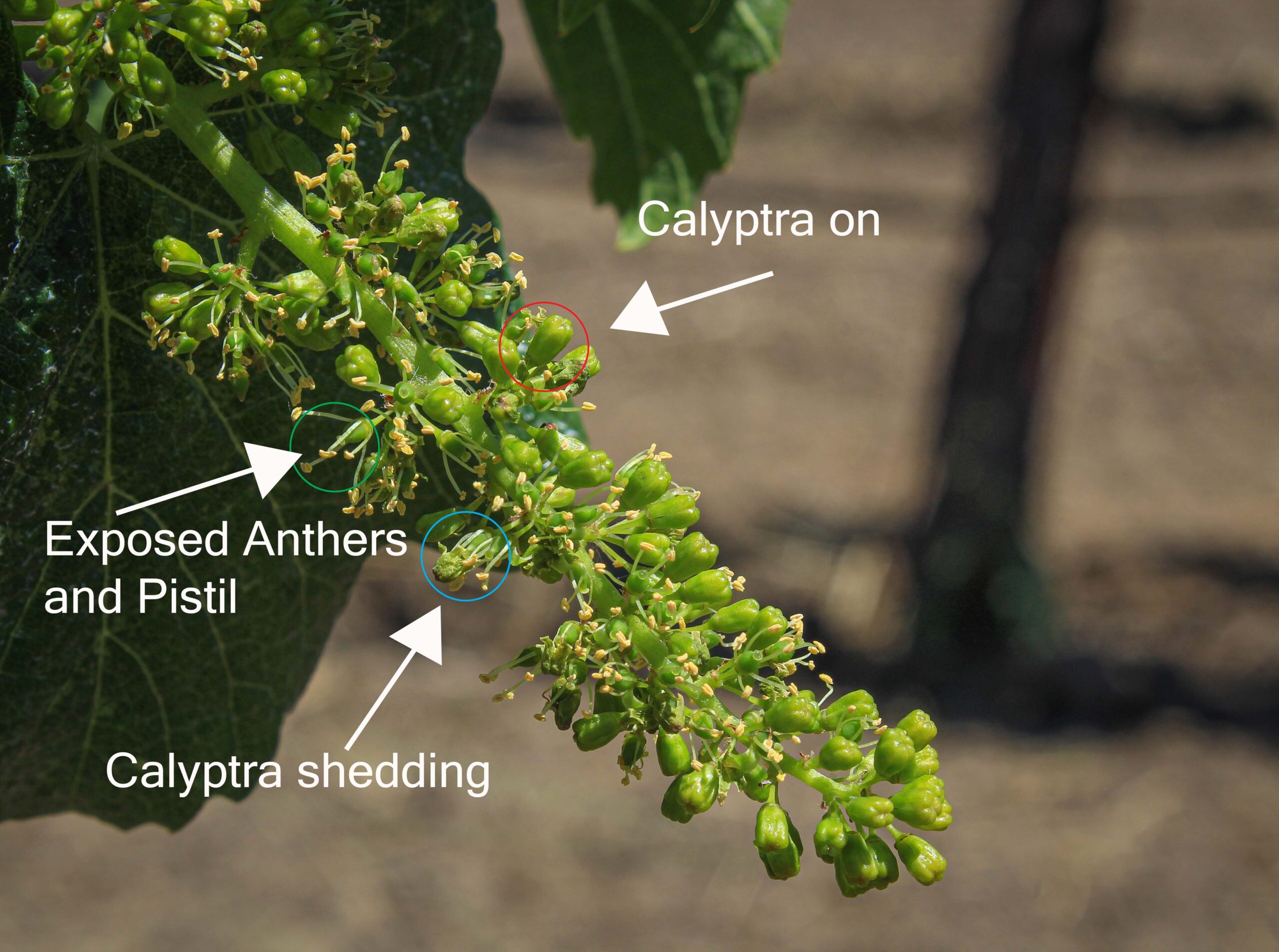
Block News
As we transition into the heart of spring, we’re greeted by sunny forecasts after a typical wet winter in Napa Valley. Thankfully, we’ve achieved 24” of precipitation in Oakville and Yountville during this period. In comparison, we received 39” during the winter of 2023, 12” in 2022, 11” in both 2021 and 2020. The accumulated winter precipitation is critical since we receive ~90% of our total annual rainfall during November through February. Although it’s still quite early, we hope that the remainder of the growing season follows this trajectory for another classic Napa Valley vintage.
Budbreak on the Horizon
The crew finished pruning our entire acreage last week, after 3-months of meticulous labor. Sap can be seen dripping off of fresh pruning wounds, signaling that the root systems of our vines have reactivated from dormancy – budbreak is nearby. Budbreak marks the beginning of a grapevine’s annual growth cycle, initiating the transition from dormancy to active growth. The temperature of the buds determines when and how rapidly they will burst. As the weather becomes more favorable, dormant buds will begin to swell, turn woolly, and then burst. Interestingly, the yields for this vintage have already been predetermined within each dormant grape bud formed in 2023, as grapevines have a two-year reproductive cycle. We expect budbreak to begin towards the end of this week, given the warm and sunny forecast.
Exploring the Vigorous Phase of Vegetative Growth
Budbreak is followed by rapid shoot growth, with new leaves appearing every few days. The canopy will reach approximately half of its’ total size towards the completion of this stage, which can last about 30-40 days depending on variety, rootstock, and temperature. This developmental stage is fueled by the storage reserves, located in the permanent structure of the vines (ex. roots, trunk). Grapevines focus on filling up these reserves through photosynthesis and nutrient redistribution after the completion of berry maturity during the previous growing season.
The Delicate Dance of Bloom
The conclusion of the vegetative stage leads into bloom, the most sensitive period of the cycle, which finalizes our yields for the vintage. Bloom begins with the shedding of a protective cap (calyptra), which covers the male and female organs of the flower. With these structures now exposed, fertilization can occur. Grapevines contain both anthers (male) and a pistil (female), as they were domesticated to self-pollinate ~8,000 years ago. Bloom is an incredibly sensitive part of the growth cycle, as any temperature outside of the optimal range of 68F-77F can slow this process and lead to the prevention of fertilization (berry production). Additionally, any precipitation or hail, which is a risk during this period, can drastically lower yields. The entire bloom cycle will typically last 2-3 weeks, depending on weather conditions. During this time, growers throughout the valley are collectively holding their breath! Bloom concludes with the formation of the spectacular berries, which will eventually transform into delicious wine.
I hope you enjoyed this journey through the fascinating lifecycle of grapevines. Stay tuned for updates on the outcome of bloom in our next newsletter. Here’s to an exciting spring season ahead!
Wishing you a wonderful spring!
Alec Klobuchar, Yount Mill Vineyards Viticulturist






